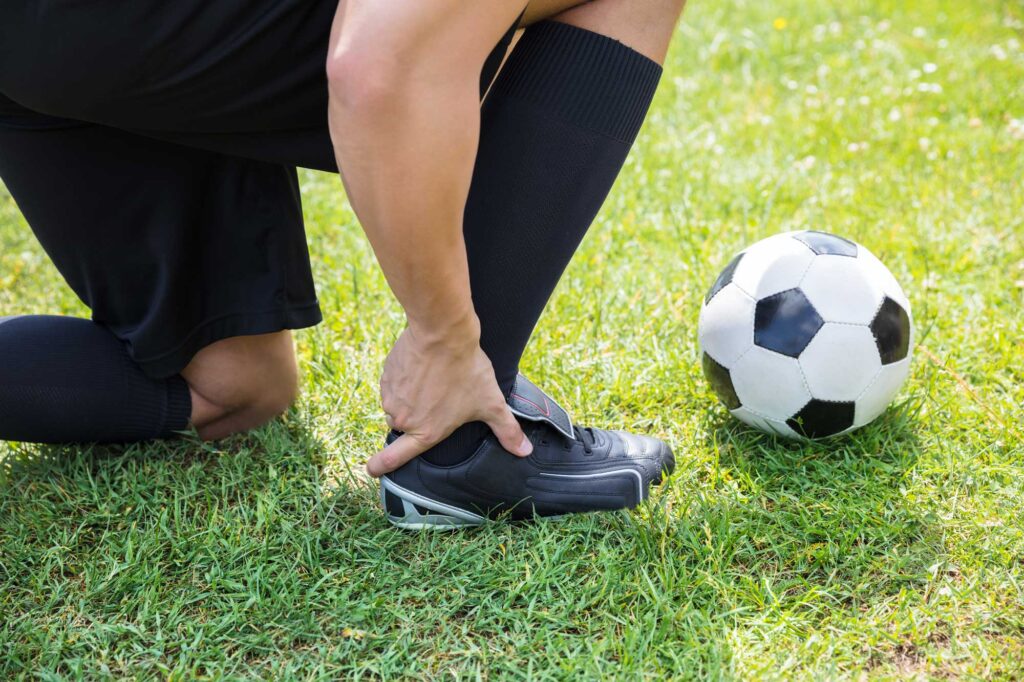
The tibia (shin bone) and talus (foot bone) form the ankle joint and cartilage covers the bones so the joint can move smoothly. Ligaments also connect the bones to provide mobility and stability.
“Plantar flexion” is a movement the ankle makes to point the foot down when running, dancing or jumping. Forceful or repetitive plantar flexion can cause what is known as posterior ankle impingement syndrome, meaning the ankle bones and soft tissues are compressed and inflamed.
At Olympia Orthopaedic Associates, our Orthopaedic Foot and Ankle Team are experts in treating Posterior Ankle Impingement Syndrome as well as countless other foot and ankle injuries. Below is everything you need to know about Posterior Ankle Impingement Syndrome and how we can treat it.
Posterior Ankle Impingement Syndrome: Causes and Symptoms
Athletes (gymnasts, dancers, and soccer players) and active individuals are most at risk for this condition as their sport requires excessive amounts of time in the flexed position. But, patients who experience ankle injuries, such as sprains, and do not complete rehab are at risk as well.
A sharp pain in the back of the ankle is the most common symptom and weakness or a dull ache after physical activity may also present. Symptoms often become worse if posterior ankle impingement is not diagnosed and treated properly.
Posterior Ankle Impingement Syndrome: Diagnosis
Our Orthopaedic Foot and Ankle Specialists diagnose posterior ankle impingement syndrome by obtaining a detailed history as well as information as to how and when the injury may have occurred.
A physical examination is performed and ankle anatomy, strength and flexibility are checked. Diagnostic tests, such as an X-Ray or MRI are ordered and reviewed to review both the bones of the ankle as well as the soft tissue.
Posterior Ankle Impingement Syndrome: Treatment
Our Orthopaedic Foot and Ankle Specialists prescribe a customized treatment plan based on your unique goals and activity level.
When the pain is controlled, the focus is re-directed to regaining ankle strength and flexibility. Rest, ice, compression and elevation (RICE) control pain and swelling associated with the initial injury. Other treatment options can include:
- Nonsteroidal anti-inflammatory medications (NSAIDS). Oral medications that decrease inflammation and pain.
- Immobilization. A cast, splint, boot or brace immobilizes the ankle for a short period of time.
- Physical therapy. Exercises strengthen and stretch the ankle. Physical therapy may also focus on correcting the improper mechanics that led to the initial injury.
- Corticosteroid injections. An injection that has a combination of an anti-inflammatory and anaesthetic may be used if the injury does not respond to other treatment options.
Athletes who adhere to the advice of our Orthopaedic Foot and Ankle Specialists can expect a quick return to competition once treatment has been completed.
Make an Appointment
If you want to compete at your highest level, then a foot or ankle injury should not be ignored. Make an appointment with one of our Orthopaedic Foot and Ankle Specialists today so that your injury can be accurately diagnosed. Your treatment plan will relieve your symptoms so you can get back to doing what you love!
Please contact one of our offices throughout Olympia to schedule your appointment.
